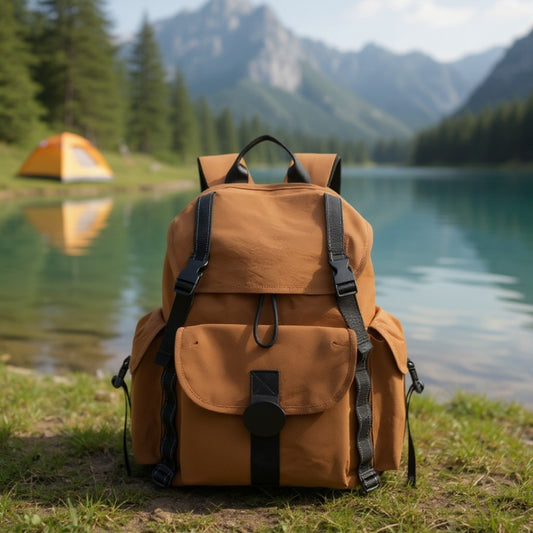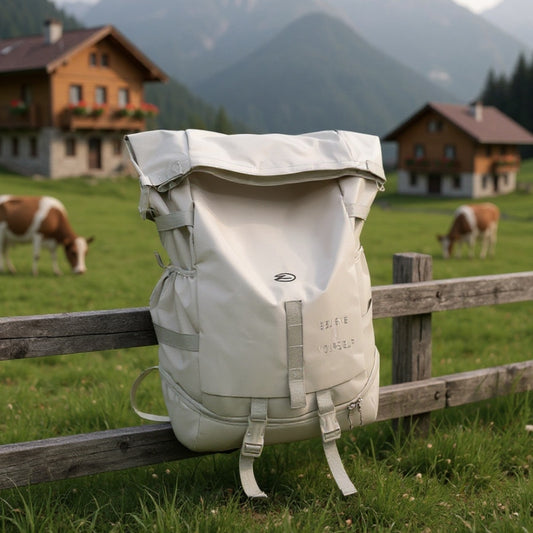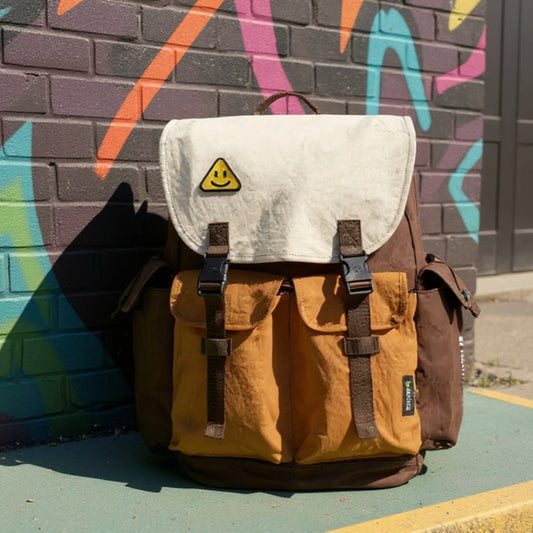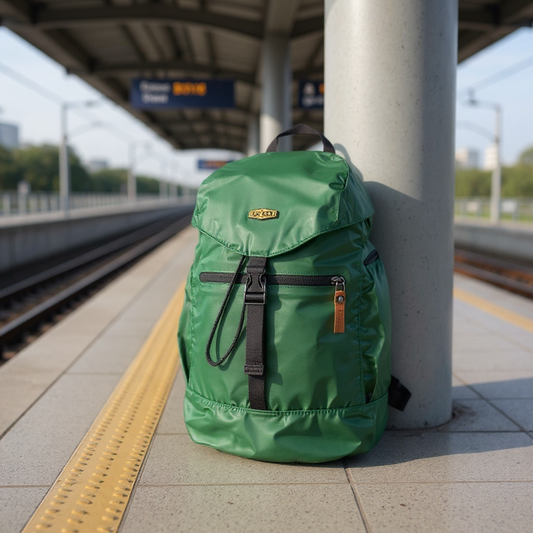Creek Fishing: What I've Learned From Missing More Fish Than I've Caught
Share
Fell in Tolt River last July. Phone in my pocket, water went over my waders, and I spent the next hour sitting on the bank letting everything dry out. That's creek fishing—one wrong step on a wet rock and you're done.
I'd been trying to figure out creek fishing for about two years at that point. Read articles, watched videos, bought gear my buddy recommended. Spent most weekends in streams around Snoqualmie catching almost nothing. Maybe 10 fish that whole first season.
How I Got Started (and Why It Took So Long)
My neighbor Jake fishes the Snoqualmie Valley creeks every weekend April through September. Comes back with photos of 16-inch smallmouth that make no sense for water you can practically step across.
First time I went with him was a few years back. We drove 40 minutes to a creek he wouldn't name—classic—and spent four hours catching nothing. Well, Jake caught six. I caught zero and a cold.
"You're moving too fast," he told me around hour three. "And you're wearing the wrong shoes."
He wasn't wrong. I had on old running shoes that turned into ice skates the second I stepped on a rock. Spent more time steadying myself than actually fishing.

What Actually Works
Took me six more trips to figure out creek fishing isn't really about the fancy stuff everyone talks about online. It's simpler than that, but you have to pay attention.
Small Baits, Actually Small
Everyone online says "use small lures" and then shows photos of baits that still look pretty normal. Jake uses stuff that's genuinely tiny—2-inch tubes, maybe a small crawfish imitation. First time I tried his setup, caught three fish in 20 minutes after weeks of nothing.
The smallmouth in these creeks aren't looking for a meal. They're opportunistic, grabbing whatever drifts by. Big lure means big commitment, and they don't want that.

Wade Upstream, Always
This one made the biggest difference. Spent my whole first season walking downstream because it felt easier. Fish could see me coming a mile away.
Going upstream means:
- Your movement stirs up sediment behind you, not in front
- Fish face upstream naturally, so you're approaching from behind
- You can work your bait with the current, which looks more natural
Does it take longer? Yeah. Does it work better? Absolutely.
The Deep Spots Matter More Than You Think
Late June last year, temperatures hit the high 80s for a week straight. Creek fishing was miserable—until I started focusing only on the deeper pools.
Even 4-5 feet counts as "deep" in a creek. These spots hold multiple fish during summer, all stacked up waiting for something to wash down to them. One good pool can produce 10-12 bites if you work it right.
The shallow riffles everyone gets excited about? Basically empty once it gets hot.

Gear That Actually Matters
Shoes
Wading shoes from Walmart work fine. Spent $19 on mine three seasons ago, still using them. The grip matters way more than the price.
Regular hiking shoes get slippery. Water shoes are too thin. Wading shoes hit the middle—enough grip to stay upright, enough protection that you don't feel every rock.
The Right Rod
Medium-light spinning setup. That's it. All the creek anglers I know use something similar—6'6" to 7' rod, nothing fancy. Mine was $60 at Bass Pro. Works great.
You don't need expensive gear for creek fishing. The fish aren't big enough to require it, and you're going to bang your rod into rocks and branches anyway.
Actually Useful Backpack
This matters more than people think. You're walking a lot when you creek fish—sometimes 2-3 miles of wading over 4-5 hours. Having a pack that doesn't bounce around makes a huge difference.
I switched to a lightweight waterproof backpack last season and honestly should've done it sooner. Keeps everything dry, sits tight while you're moving through water, and the side pockets work perfectly for quick gear access without taking it off.
Jake uses an old school backpack and has to stop every 20 minutes to reorganize his tackle. Watching him do that made me realize how much time you waste with the wrong pack.
The Timing Thing Nobody Explains Well
Creek fishing changes throughout the summer in ways that aren't obvious until you've done it a few seasons.
May-Early June: High Water
Water's usually higher and faster. Fish are spread out, harder to find. This is when I catch the least amount of fish but cover the most ground.
Not my favorite time, but the fish you do catch tend to be bigger. Something about the higher water bringing up larger smallmouth from wherever they hide during the main season.
Mid-June through August: Prime Time
Water drops, fish concentrate in pools, and suddenly it's actually fun. This is when Jake catches 30+ fish in a single outing.
The deep holes I mentioned earlier? They're the whole game during this period. You can literally watch smallmouth stacked in 5 feet of clear water, waiting.
September: Unpredictable
Some days are amazing. Some days you catch nothing. No idea why—Jake doesn't know either. We both keep going back because when it works, it really works.

Where I Fish (Sort of)
Not naming specific spots because that's apparently against creek fishing rules. But I can tell you what to look for.
Creeks with public access points off forest service roads are usually your best bet. Too close to town means everyone's been there. Too remote means you're hiking 3 miles just to get to water.
Look for:
- Creek crossings with small parking areas
- Forest service roads that parallel creeks
- Sections where the creek is visible from the road
Jake uses Google Earth to scout. Spends hours zooming in on creek bends, looking for signs of deeper pools. I tried that once, gave up after 15 minutes, and just started driving around instead.
Both methods work. His is probably smarter.
The Reality of Creek Fishing
Most trips, I catch 5-8 fish. That's normal, despite what people post online.
Great days? Maybe 15-20 fish. Those happen 2-3 times per summer, and they're usually tied to weird weather patterns I don't understand well enough to predict.
Bad days? Zero. That's also normal, happens about one trip in four. Sometimes the fish just aren't cooperative, and no amount of lure changes or presentation adjustments makes a difference.
The last waterfall hike I did near North Bend ended at a creek full of smallmouth. Caught six in 30 minutes using nothing but a tiny tube jig. Then they stopped biting completely. No idea why.
That's creek fishing. Unpredictable, occasionally frustrating, but worth it when things line up.
Why I Keep Doing It
Honestly? It's the only fishing where I can just walk to the water and start without all the boat launch hassle.
Park the truck, put on wading shoes, grab my pack, and I'm fishing in under 10 minutes. Compare that to launching a boat, driving to a spot, setting up electronics—creek fishing cuts through all that.
Plus, most days I see maybe 1-2 other anglers, if any. The solitude matters more to me now than it did when I started.
And the fish thing. Can't forget that. When a 14-inch smallmouth hits a topwater in 3 feet of clear water, and you watch the whole thing happen—that's worth every skunked trip that came before it.




